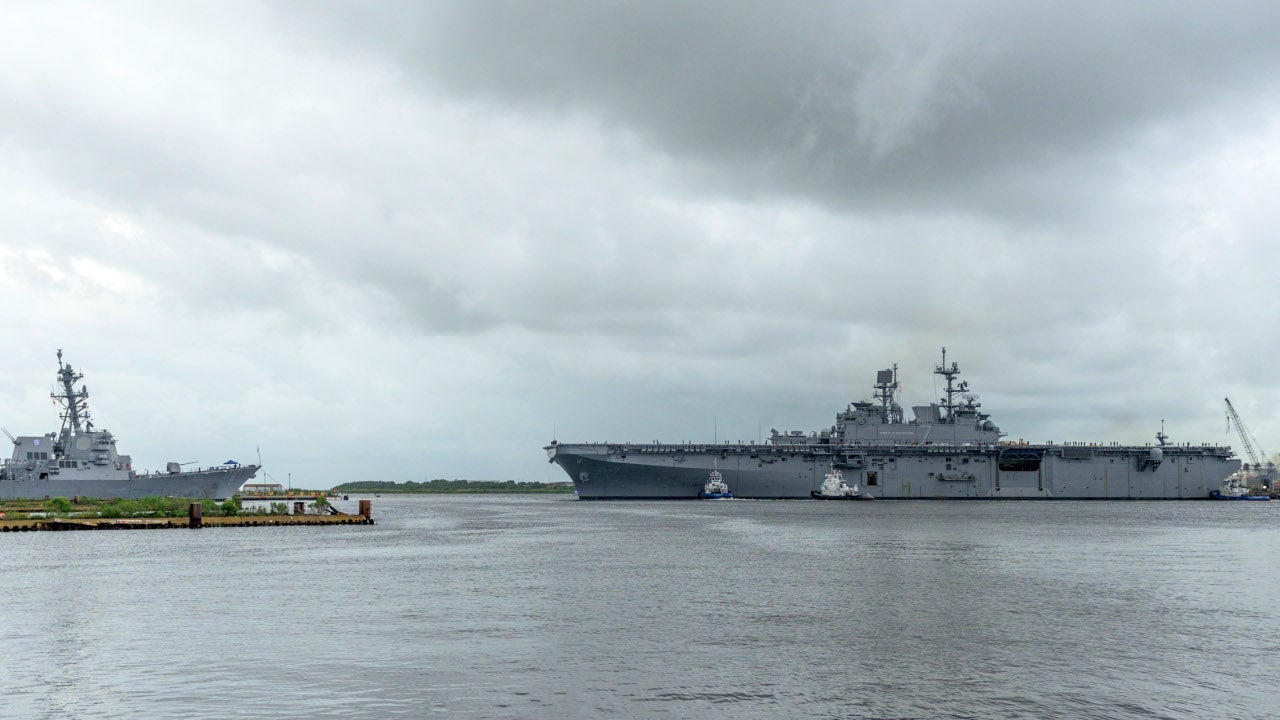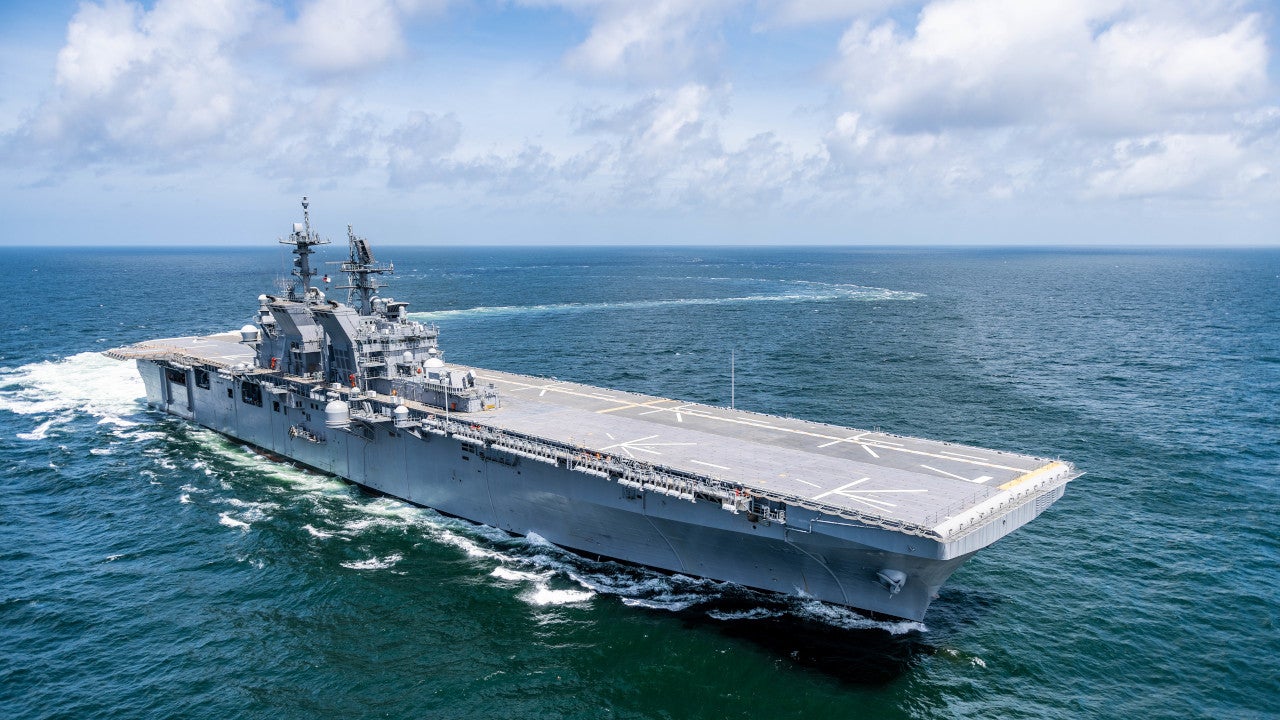The America class amphibious assault ships are being built by Northrop Grumman Shipbuilding for the US Navy. The ships replace the Tarawa class amphibious assault ships.
The US Navy signed a $2.4bn fixed-price incentive contract with Northrop Grumman for the detail design and construction of the leading amphibious assault ship in the class, USS America (LHA-6), in June 2007. The keel was laid down at Northrop Grumman’s Ingalls shipyard in July 2009.
USS America was delivered in April 2014 and commissioned in October 2014. It is the fourth ship in the US Navy to bear the name.
Northrop Grumman was awarded a $175m advance procurement contract by the US Navy for the LHA-7 in June 2010 and the work was carried out at the Gulf Coast facilities of the company. LHA-7, named USS Tripoli, was laid down in June 2014 and was commissioned in July 2020.
The US Navy signed a $272.47m contract with Ingalls Shipbuilding for the construction of LHA-8, USS Bougainville, in June 2016. The contract also includes options, which will bring the value of the contract to $3.1bn when exercised. The keel-laying ceremony of the vessel was held in March 2019.
USS America (LHA-6) amphibious assault ship design
The design of USS America (LHA-6) was based on the hull design of USS Makin Island (LHD-8). In addition to a gas turbine propulsion system, the design incorporated several modifications to complement aviation operations and support activities.
The well deck was converted into an extended hangar deck and included two wide and high bay areas. An overhead crane was installed in each bay area for aircraft maintenance.
The design also included a reconfigurable command and control centre, a hospital, additional aviation fuel storage facilities, and aviation support areas. These changes enable the ship to serve joint, inter-agency and transnational maritime forces.
The America class ship, previously known as LHA (R) class, has an overall length of 257.2m, beam of 32.3m, and a displacement of 44,971t. The ship can accommodate 1,204 crew and 1,871 troops. Its hybrid propulsion system provides a maximum speed of more than 20k.
America class aircraft capabilities
The vessel has hangar large enough to accommodate aircraft movement. The ship also has increased aviation fuel capacity, and storage for aviation parts and support equipment. With its 45,000t displacement and complement of strike fighters, it can serve in the small carrier role.
The America class can accommodate 12 MV-22B Osprey tilt-rotor aircraft, six STOVL F-35B Lightning II joint strike fighters, four AH-1Z attack helicopters, four CH-53Ks, and three UH-1Y utility helicopters.
The ship can also support cargo operations, attack helicopters, and the AV-8B Harriers. The exact configuration of the ship’s aircraft complement varies based on its mission.
America class missiles
The America class amphibious assault ships are armed with two rolling airframe missile launchers and two evolved Sea Sparrow missile (ESSM) launchers. ESSM launchers are used against incoming missiles, aircraft, and other surface threats.
Naval guns
The ship is fitted with seven twin .50-calibre Browning machine guns. Two 20mm Phalanx close-in weapon systems (CIWS) will also be mounted on the vessel. The phalanx CIWS provides self-defence against anti-ship missiles and close-in air and surface threats.
Countermeasures
The America class ships are fitted with the ship self-defence system (SSDS) developed by Raytheon. SSDS comprises software and commercial off-the-shelf hardware. It integrates radars with anti-air weapons, including hard-kill (missiles and rapid-fire gun systems) and soft-kill (decoys).
The SSDS receives data from individual radars, the electronic support measures system (radar warning receiver) and the identification-friend or foe system. It forms a composite track from this data, which is used to identify, prioritise, and track threats.
The system provides a final layer of self-protection against anti-ship cruise missiles, including subsonic (Mach 0.9) and supersonic (Mach 2+) low-altitude variants.
Propulsion
The ship is powered with a hybrid mechanical-electric propulsion system. The system consists of two LM2500+ gas turbines and two 5,000hp auxiliary propulsion motors. Each gas turbine is rated at 35,290shp and provides speeds over 22k.
The propellers are driven either by the gas turbines or by the electric motors. The on-board service electrical system powers the electric motors. The system enables the ship to run in a more fuel-efficient mode across its speed range.




